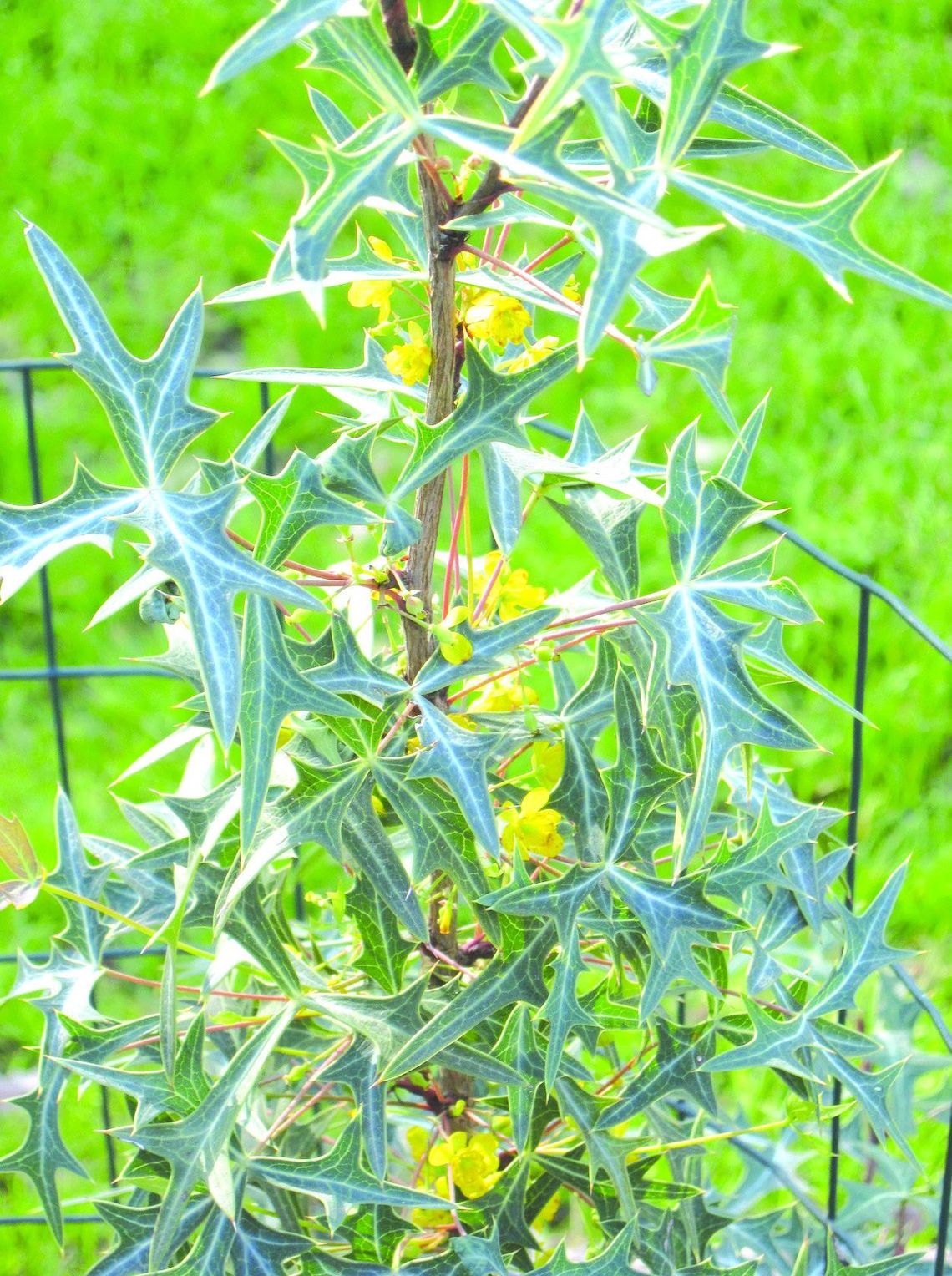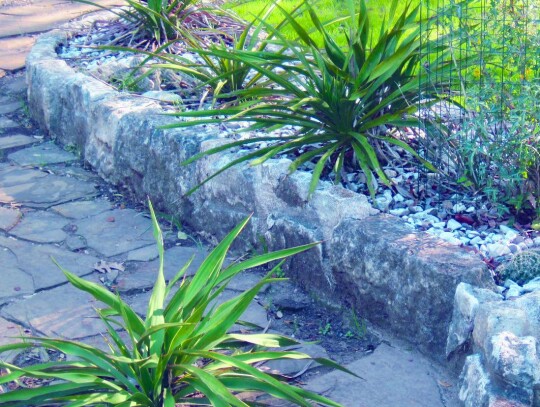Native deer and imported peacocks are regular visitors to Spring Lake Garden Club’s March Yard of the Month on Allen Street, just a block from Wonder World Cave and Wildlife Park. Home of Alan Atchison and Minnette Marr since 2006, this tree-shaded property combines native and urbanized plants in an attractive year-round sustainable landscape.
Deer are no strangers to San Marcos yards, so a few wire cages protect plants in this front yard. But peacocks may actually add to the plant mix by bringing in seeds caught in their trailing tails, according to Marr, a plant conservationist and curator of seed collection at the Lady Bird Johnson Wildflower Center.
This Allen Street yard includes numerous oaks and anacua trees, whose flowers and seeds attract both birds and bees. Anacuas have arching branches similar to a live oak but grow much faster, and the leaves are easily identified by a surface that feels like sandpaper. Under the trees is a simple mix of grasses and ground covers interspersed with numerous twist-leaf yuccas and mounding bear grass. Atchison and Marr added drought-tolerant native plants after settling here and got rid of light-starved carpet grass by cutting off supplemental watering. Replacement ground cover includes native grasses and spreading plants such as straggler daisy or horse herb and false dayflower. Atchison uses a push mower to trim the current mix of green surrounding islands of yucca and bear grass, edged with rocks to slow rainwater flow towards the street.
The original landscape plan was to have something blooming all year long, but deer quickly sidetracked that goal by dining on Missouri violets (January bloomers), since relocated to the fenced back yard. A few blue spiderwort flowers peek out from beneath the spiny branches of an agarita, trained to grow prostate to cover smaller blooming plants underneath, but deer still devour agarita blossoms before berries can form. Another agarita and an evergreen sumac share a metal fenced circle near the mailbox, where a rock planter in full sun hosts more twistleaf yucca. This planter is also a nursery for Missouri foxtail cactus which Marr collected on Post Road and is part of her seed sharing project.
Both this planter and the handsome flagstone walk from curb to entry were installed by the previous homeowner.
Atchison and Marr are masters at discovering ways to protect their landscape from browsing deer and to plan ahead for future challenges. Two young anacua trees in front may claim growing space in case future oak wilt infects the large live oaks, and an arborist has thinned the current tree canopy to allow more light for the new trees and other plants to thrive. The fence separating front and back yards is not “deer proof,” but Marr hung a wire above the top of the fence with colorful tape flags every few feet fluttering in the breeze, which discourage deer from jumping over. Bird feeders in the back yard were a target for deer, but Atchison takes down the favorite — sunflower seeds — at night, and after dark Marr regularly challenges deer outside the fence with a bright light and noises to make them wary of jumping in. So far these deterrents seem to work and can be repeated as needed. Meanwhile, this yard is a model of sustainably managing wildlife and native plants in an urban environment.











